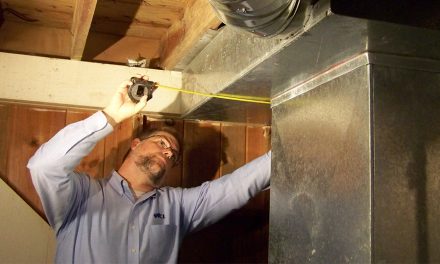Common Steps for Transition Management

Perspective Moment – Studies indicate that employees often view different factors as components of compensation, and the top five include having a boss who:
- Shows appreciation
- Cares about employees and their families
- Makes the employee an insider/contributor to the company
- Gives affirmation
- Pays a competitive wage.
Of these top five factors, pay rarely seems to rise above number five for employees.
To add to our employees’ work experience and bring a sense of ownership to new processes, we have the opportunity with a transition management process. Here are some steps used in that process:
1 Without making any announcements, begin collecting data and do the calculations to determine a baseline performance
2 Be sure to have informal conversations with a service department influencer. For example, you can pull the influencer aside and say, ‘I’ve been thinking, I’d like to make our techs the best paid in our market. I have some ideas and I’d like to get your thoughts on some of this stuff. I’ve tasked Gail (the dispatcher) to schedule your first call between 10 am and noon tomorrow so we can go to breakfast. Where do you want to go?’
3 At breakfast, review the math showing your influencer how the extra pay for production is better than the labor rates for a slow tech.
4 Ask the tech his thoughts on what kind of safeguards should be in place. At the end of the first conversation, ask him to keep it quiet because nothing is in place and it maybe six months or longer before anything can be implemented.
5 Take the ideas from the influencer and mix them with the basic elements of R/S. Then have a second meeting and review a more defined plan and get his feedback. Strongly suggest that he challenge the plan. Share ideas that can ‘break the program.’
6 Without sharing the revenue/hour (R/H), let the service techs and dispatchers know that the KPI for R/H is $110.00/hour. Define what that means and that all they need to do is move in a timely manner (never hurry) and aim to have no call-backs. Oh, and make sure they charge properly for all the work they do.
7 You will find that just about all your capable techs will rise to a range of $85.00 to $100.00/hour. This, combined with no call-backs, is a pretty good indicator that the tech is capable of performing over the KPI of $110.00.
8 Finally, have a roll-out meeting. Be sure to give the influencer much of the credit for putting the program together. During the roll-out, establish that this is a program intended to reward craftsmanship, anyone can earn it, but it is owed to no one. Include a printout of all the ground rules necessary for a tech to qualify for R/S.
Four Unintended Benefits:
- During the slow seasons, technicians would rather protect their R/H numbers rather than slow down and milk the clock. Generally speaking, they feel they will make more in fewer hours and earning R/S, as opposed to turning 28 hours of work into 35 hours on payroll.
- In an effort to keep R/H up, preemptive service work will be done during prepaid tune-ups. Selling spiffs can continue, but many techs would prefer to clean blower wheels, test capacitance under load, and replace weak caps now rather than fan motors at 7:00 in the evening in July and August. As a result, prepaid tune-ups seem to increase in value in the minds of customers and employees.
- Callbacks almost disappear. There is a compelling reason for technicians to pay attention to details. After all, at the end of the month there is the possibility to earn an extra week’s pay when callbacks are eliminated.
- Pride in being the best-paid techs in the marketplace. When base pay, spiffs, and R/S are added up and divided by the number of hours in the month, it is probable that word at the supply houses will sound something like this, ‘they get $38.00 an hour over there.’ This is with a tech whose base hourly pay maybe $23.00 an hour. But the total hourly compensation is truly much more.
Dennis Mondul from HVAC Contractor Solutions (HCS), has been doing consulting and training for HVAC contractors in North America since 1992. The HCS mission is to show contractors how other contractors increase the quality of life for their families, employees’ families, and deliver a better-quality service to their customers. For answers to any questions regarding this article, contact Dennis at 561/202-4371. You can also reach him at dennism@hvaccsllc.com or submit a question at hvaccsllc.com.
Also by Dennis Mondul: Service Callbacks: And Now for the Rest of the Story …













Recent Comments